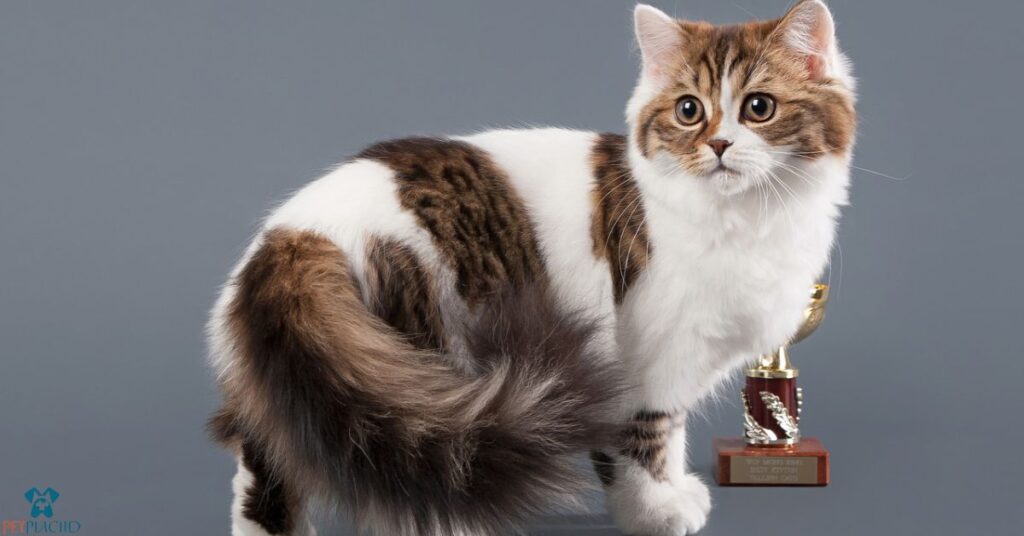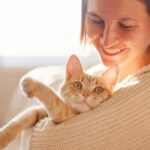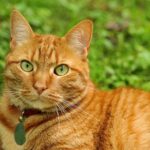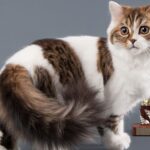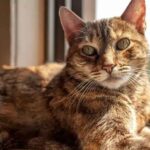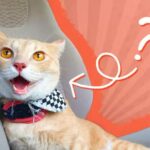Have you ever come across a cat that looks like it’s wearing a funky patchwork coat? You may have encountered a harlequin cat! These felines sport a truly distinctive and eye-catching appearance with their predominantly white fur adorned by splotches of color.
Harlequin cats are a type of bicolor (or piebald) and tricolor coat pattern found on some domestic cats. This striking coat is defined by having white as the predominant color with random spots of another hue dispersed over the head and body.
According to the guidelines set by the Fédération Internationale Féline (FIFe), the world’s largest cat registering organization, harlequin cats should have between 50-75% white fur with color patches covering the remaining areas, primarily on the body. Some color may also appear on the face.
Why are they called harlequin cats?
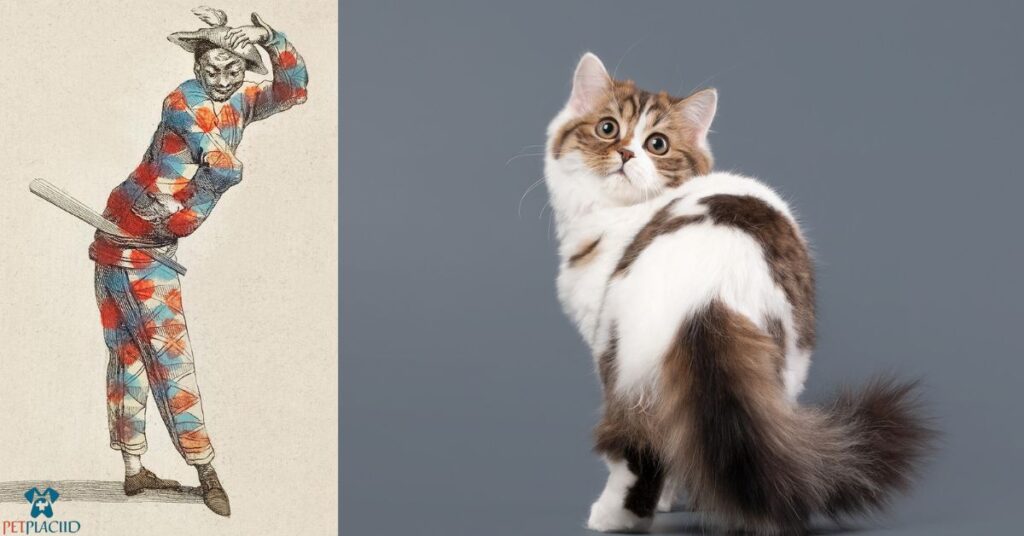
The term “harlequin” is borrowed from a famous character introduced in 16th-century Italian Commedia dell’arte.
This comic figure was known for wearing a distinctive checkered costume with a patchwork of bright colors and patterns.
Similarly, harlequin cats feature an irregular patchwork of colored markings against their otherwise white coats, echoing that iconic costume design.
An 18th-century illustration of a harlequin character wearing the traditional multi-colored, diamond-patterned outfit.
Are harlequins a breed of cats?
No, “harlequin” does not refer to a specific breed of cat. It simply describes a unique coat pattern that can appear in any breed or mix of breeds.
Some examples of purebreds that may exhibit the harlequin look include the British Shorthair, Maine Coon, Persian, and Turkish Van, among others.
Black and white harlequin cats
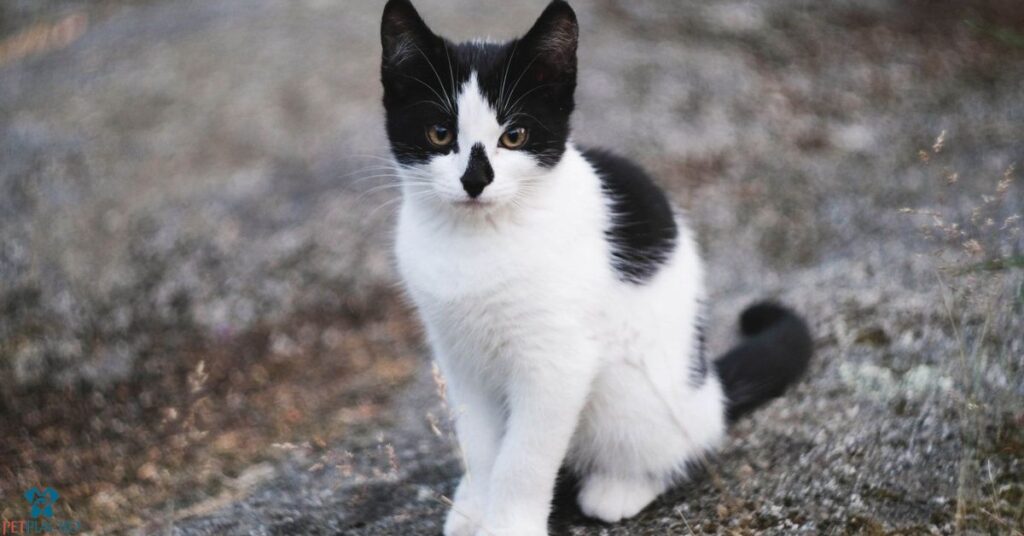
One of the most common and visually striking forms of the harlequin pattern is the classic black and white variation.
These bicolor felines are often affectionately called “cow cats” or “moo cats” due to their resemblance to the iconic black and white markings of Holstein-Friesian dairy cows.
Black and white harlequins make for wonderfully photogenic subjects! Their high-contrast coats are eye-catching and graphic.
The patches tend to have soft, blended edges rather than forming harsh lines and angles.
While most black and white harlequins have fairly even distribution of both colors, some may be more heavily white or black in their coats.
As long as there are distinct bicolor patches and they fall within the 50-75% white range, they still qualify as harlequins.
Types of Color Combinations for Harlequin Cats
While the black and white harlequin is one of the most recognizable versions, these uniquely patterned cats can showcase a striking rainbow of color combinations. Some possibilities include:
- Chocolate (brown) and white
- Cinnamon (light brown) and white
- Red and white
- Blue (gray) and white
- Lilac (pale purple) and white
- Fawn and white
- Cream and white
- Calico (tricolor orange, black, and white)
- Tabby markings (with classic striped, spotted, or swirled patterns)
The coloring is based on which pigment genes the cat inherits.
The harlequin’s patches can display solid colors, tabby markings, or even the distinctive calico tri-color patterning of orange, black and white.
Some color combinations like red/white or chocolate/white tend to create a softer, more subtle look compared to higher contrast options like black/white.
And calico harlequins are about as eye-popping as it gets with their vivid tricolor coats!
Recommended Post:
Torbie Cats Explained: The Captivating Mix of Tortoiseshell and Tabby
Calico Harlequin Cat
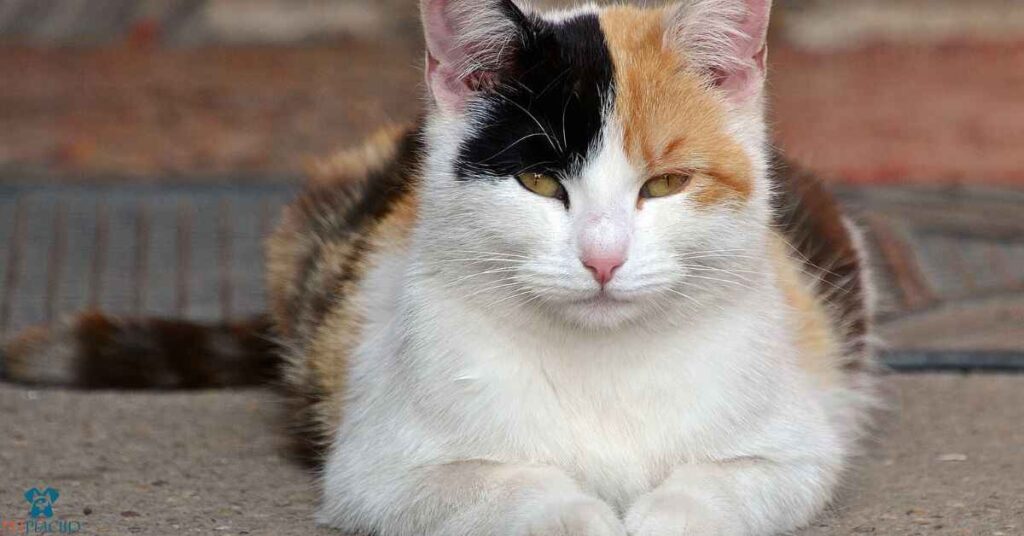
Some harlequin cats rock the iconic tricolor calico coat with large patches of orange, black, and sometimes blue or cream scattered across a predominantly white base.
The cat’s tail will typically continue the calico patterns of orange and black patches.
Calico harlequins are an absolutely striking variation! The contrasting shades of white, orange, black and sometimes pale blue or cream create a vibrant, wildly patterned look.
These colorful calico patches tend to be larger, more defined sections compared to the softer freckling and lace-like patterns you see on a traditional calico coat.
That patchwork effect combined with the contrast of the white areas gives these cats a real wow factor.
Harlequin cat with tabby coat pattern
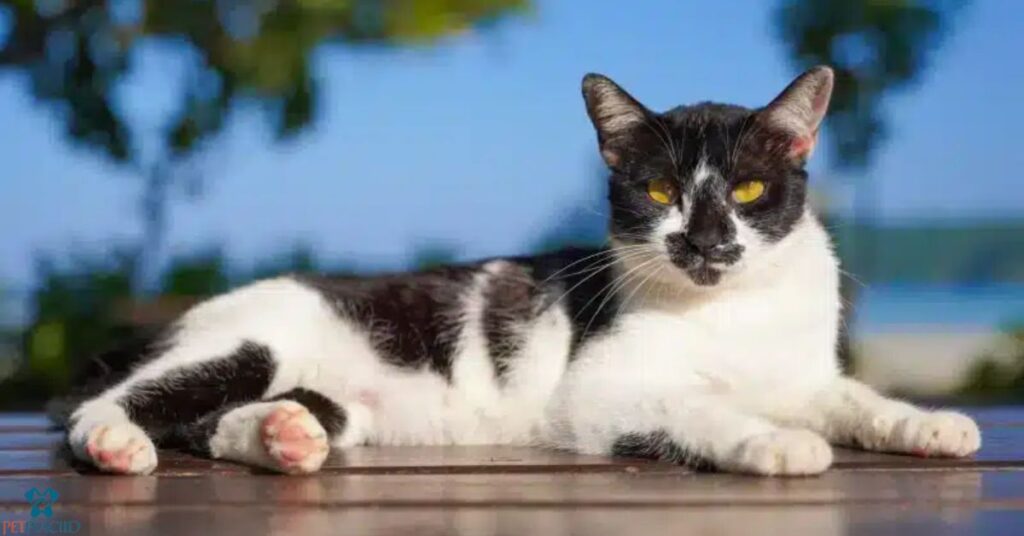
In addition to solid colors, the patches on a harlequin cat can also take the form of classic tabby markings.
You may see mackerel stripes, swirling classic patterns, spots, or ticking standing out against the white portions of the coat.
Tabby-patterned patches add even more intricacy and visual interest to the harlequin’s already eye-catching coat.
Between the contrasting zones of white and multi-colored patches, no two of these cats will ever look exactly alike!
The tabby patterns combined with the white give these harlequins an almost “tortoiseshell and white” look in some cases.
Others may resemble the bold, high contrast markings of a brown or classic patched tabby cat against their pale base coat.
Cat Breeds That Can Have a Harlequin Coat Pattern
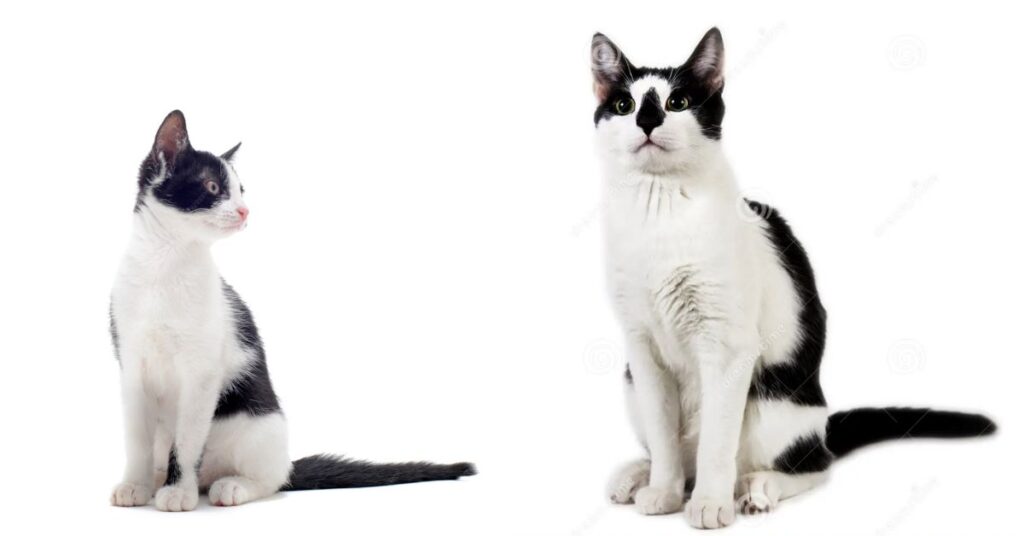
As mentioned, the harlequin pattern is not breed-specific. It can theoretically occur in any cat breed or mixed breed cat.
However, here are some popular purebred cats that may sometimes produce harlequin-coated litters:
- British Shorthair
- Colorpoint Shorthair
- Maine Coon
- Munchkin Cat
- Japanese Bobtail
- Persian Cat
- Turkish Van
The semi-longhaired Maine Coon breed in particular seems to produce some gorgeous harlequin examples, like this black and white bicolor beauty.
The fluffy, shaggy coat causes the patches to blend softly into the white areas.
While most harlequins seen are domestic shorthairs or mediumhairs, the longhaired breeds can create some wonderfully fluffy harlequin coats too.
A Persian or Maine Coon with harlequin markings will have a much different look and texture than their shorthaired counterparts.
On the other end of the spectrum, the Munchkin breed’s short stature gives harlequin Munchkin kitties a delightfully compact, almost plush toy-like appearance with their patchy coats.
Coat Patterns Similar to Harlequin Cats
Mask and Mantle Coat Pattern
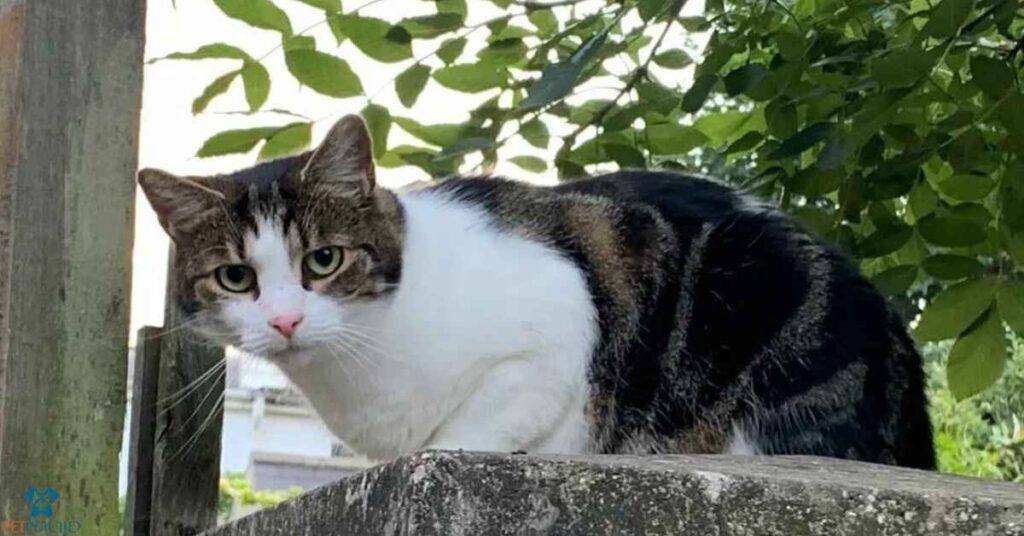
This bicolor pattern looks quite similar to the harlequin at first glance. However, mask and mantle cats actually have more color than white in their coats.
The color is concentrated primarily on the head (creating a “mask”) and along the back and rump area (like a little “cape” or “mantle”).
So while there are distinct color patches like a harlequin, the mask and mantle pattern has less overall white compared to the harlequin’s required 50.
The mask and mantle pattern has less overall white compared to the harlequin’s required 50-75% white ratio according to FIFe standards.
In addition, masks and mantles tend to have the color concentrated in those two distinct areas – the head mask and back/rump mantle.
A true harlequin will have more widespread, randomly dispersed patches over the body in addition to any head or back markings.
Cap-and-Saddle Coat Pattern
As the name suggests, cats with this bicolor patterning have a small “cap” of color on the head and a “saddle” patch along the lower back, usually around the tail area. The rest of the body is predominantly white.
This results in less overall color compared to the mask and mantle look.
The key distinction from a true harlequin coat is that the color areas on a cap-and-saddle cat are much more limited – just the tiny cap on the head and strip along the rump.
A harlequin will have more widespread patching across the body, head, and legs.
However, some cap-and-saddle cats could potentially produce harlequin-coated kittens if bred with another cat carrying the appropriate white spotting genes.
The genetics that create these distinct yet similar coat patterns overlap.
The Genetics of Harlequin Cats
Speaking of genetics, the harlequin coat pattern results from a specific combination of genetic factors that create the distinctively spotted appearance.
It primarily involves:
- The white spotting gene (S) which allows white fur to appear
- Pigment genes that produce the colored patches (black, red, chocolate, etc.)
Cats need to inherit the S gene from both parents to end up with high levels of white in their coat as a harlequin cat.
The ratio of colored vs. white areas depends on other modifying genes as well.
The genetics can get quite complex, which is why breeding two harlequin-patterned cats does not guarantee you’ll get more harlequin kittens in the litter.
However, planned, strategic breedings do increase the likelihood of producing these special multicolored felines.
Read More:
Why is My Cat Panting in the Car? Causes and Tips to Keep Your Feline Calm
The Personality of Harlequin Cats
While their unique markings are the first thing that catches the eye, harlequin cats are beloved for more than just their looks!
Many owners report that their patchy furballs have big, charismatic personalities to match their bold appearances.
Some common personality traits attributed to harlequins include:
- Clownish, fun-loving behavior
- High energy and playfulness
- Affectionate and people-oriented
- Intelligent and trainable
- Confident, even a bit sassy!
Of course, every cat is an individual.
But there does seem to be a trend of harlequin cats living up to their namesake harlequin costume origins by being little entertainers and scene-stealers around the home.
Conclusion
Harlequin cats, with their predominantly white fur adorned by patches of various colors, epitomize the enchanting diversity of feline genetics.
Originating from a 16th-century Italian character’s checkered costume, their name reflects their distinctive appearance. Found across breeds like British Shorthairs and Maine Coons, Harlequins boast captivating color combinations from classic black and white to intricate calicos.
Their allure lies not only in their unique appearance but also in their genetic complexity, adding to the fascination surrounding these charming creatures in the feline world.
Frequently Asked Questions
What is the difference between a calico and a Harlequin cat?
A calico cat typically displays large patches of white with distinct areas of black and orange, while a Harlequin cat has predominantly white fur with scattered patches of color.
What causes tuxedo cats?
Tuxedo cats owe their distinctive black and white coat to specific genetic factors influencing pigmentation patterns during development.
What is the rarest cat color?
The rarest cat color is generally considered to be solid white, although certain genetic variations can result in even rarer hues.
Are tuxedo cats bad luck?
Tuxedo cats are not inherently considered bad luck; superstitions surrounding them vary across cultures and are not universally believed.
Are tuxedo cats expensive?
Tuxedo cats are not typically expensive, as their coat coloration is not a significant factor in determining their price.

